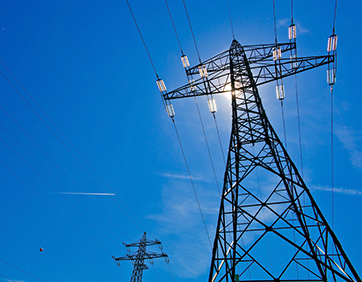Eletricity Reliability
The reliability indicators of the energy distribution and transmission systems are monitored respectively by Copel Distribuição and Copel Geração e Transmissão.

Reliability in Power Distribution
In the energy distribution segment, reliability studies begin in the distribution network planning activity, segmenting into medium voltage distribution system and high voltage distribution system. For the purposes of these studies, medium voltage customer consumption and demand data, market growth data and substation measurements are used, while high voltage data and information provided by electricity sector bodies such as the National System Operator (ONS) and the Energy Research Company (EPE) are used.
Several studies are conducted and prepared in conjunction with these agencies. Considering the vegetative growth of a given region, computer simulations of the distribution networks are carried out and systemic works are planned to supply the energy demand of consumers.
At Copel, the operation of the distribution networks is guided by the reliability of the electricity supply using computerized systems and qualified professionals to ensure the availability of the electrical system, coordinate the restoration and optimize the maintenance and service teams.
The regulatory body requires distributors to maintain a standard of continuity, setting limits for collective continuity indicators: Equivalent Interruption Duration per Consumer Unit (DEC) and Equivalent Interruption Frequency per Consumer Unit (FEC).
The management of the DEC indicator consists of the constant adoption of team availability policies, provision of interconnections between circuits aimed at rapid recovery, in addition to the benefits reaped indirectly through actions aimed at the FEC indicator, since there is no duration when there are no shutdowns.
FEC management is based on the adoption of preventive policies aimed at avoiding the disconnection of large blocks of load. These two electricity reliability indicators are part of Copel Distribuição’s set of indicators and are directly linked to the corporate indicator “Customer Satisfaction Index”.
Total Reliability
The Total Reliability Program aims to reinforce consumers’ trust in Copel’s services, working with four pillars: clear communication, automation, substation and redundancy. Through the integration of the four fundamentals, it aims to reduce the duration of power outages, as well as the number of times they occur; greater assertiveness in sending maintenance teams when necessary; increased operational safety due to improved communication system; and the implementation of automatic network reconfiguration systems.
Reliability in Power Transmission
In the energy transmission segment, Copel calculates monthly the value of the Variable Portion (PV) subsidized by the corporate indicator “Variable Portion (PV) Discount”, measured in %.
The PV represents the amount deducted from the Allowed Annual Revenue (RAP) if the transmission facilities under the company’s responsibility have not been fully available in the period, due to scheduled or unscheduled shutdowns, with an impact on the provision of energy transmission services .
The Variable Installment Discount is inversely proportional to Availability and reflects the quality of the public energy transmission service. That is, the smaller the discount calculated in the period, the greater the availability and, therefore, the better the quality of service provision.
| Year | Determined Variable Portion¹ (%) | Determined Availability² (%) | SAIDI³ (in hours) |
|---|---|---|---|
| 2021 | 0.63 | 98.14 | 162.95 |
| 2022 | 1.00 | 98.04 | 171.89 |
| 2023 | 0.85 | 99.90 | 8.40 |
1 Percentage of discount on base payment Allowed Annual Revenue
2 Annual availability of basic network transformers
3 Brazil’s power transmission businesses do not control system reliability through SAIDI. However, it is possible to calculate SAIDI for the share of the National Interconnected System (Sistema Interligado Nacional – SIN) that is controlled by Copel, by converting the availability index related to our transmission lines into unavailability (1 – availability) and multiplying the result by the quantity of hours in a year.




